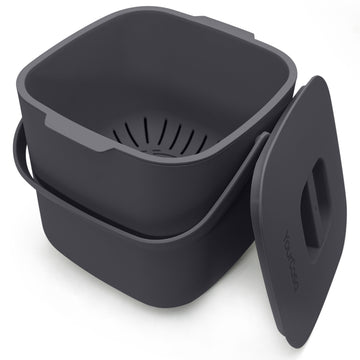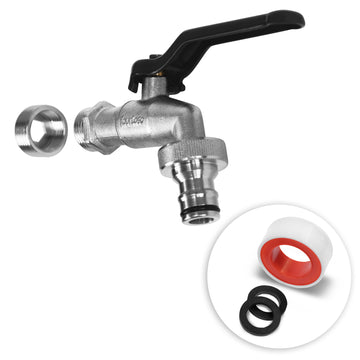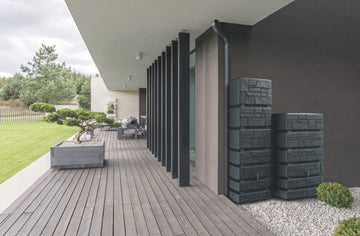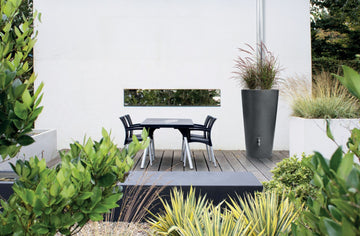Connecting rain barrels – this is how it works without any problems
by Robert Zielinski on Aug 05, 2024

Do you have a large garden, want to water it efficiently and have several rain barrels at your disposal? Then we have the right article for you today - because connecting several rain barrels offers numerous advantages for garden lovers like you.
By increasing the water storage capacity, you can not only collect more rainwater, which is particularly useful in dry periods, but the water is also distributed evenly throughout the garden. Improved water distribution ensures that your plants are always supplied with enough water - even in the dry midsummer.
Connecting rain barrels is inexpensive and can be done in just a few steps - and in the long term it can contribute to sustainable garden irrigation. This way you can water your garden in an environmentally friendly and resource-saving way, while at the same time increasing your independence from expensive tap water.
What are the benefits of connecting several rain barrels? Connecting several rain barrels increases the total water storage capacity, so that more rainwater can be collected and used. This is particularly beneficial in large gardens, as it ensures that all plants can be supplied with water evenly. In addition, the use of rainwater reduces the consumption of expensive tap water, which saves costs and protects the environment.
Step-by-step instructions: Connecting rain barrels
In this article, we'll explain to you step by step how you can easily connect several rain barrels. And when we say easy, we mean it - because the whole thing can be done in just a few simple steps.
1. You need this equipment to connect rain barrels
It is important that you have all the necessary tools and materials on hand before you start connecting your rain barrels. However, you can skip this step altogether if you purchase the rain barrel connector set from YourCasa.
This set is ideal because it contains all the necessary components and, thanks to its high-quality workmanship, guarantees a long-lasting and secure connection. With it, you can be sure that your rain barrels are connected tightly and reliably in the long term - without any leaks ever occurring.
2. Before you start, make sure
Before you start the installation, check the location of your rain barrels again . The place should be level and stable - this is the only way to ensure an optimal connection. Make sure that the rain barrels are level and have enough space between them so that the connecting pipes can be installed without any problems.
If you follow these tips and ensure good preparation , you can avoid later problems such as leaks right from the start.
3. Install the connection set
To connect the rain barrels, first drill holes in the sides of the barrels - exactly where the connecting pipes are to be installed. The connection should be as high as possible for the first barrel so that the rain barrel fills up before the water finally runs into the second rain barrel.
Use a drill with a suitable attachment, such as the one in the set, to drill precise holes. Then assemble the connecting pipes from the YourCasa set and secure them with the included seals and nuts. Make sure that all connections are tightened to avoid leaks. If necessary, apply sealant to further secure the connections.

Common problems and solutions when connecting rain barrels
Although connecting rain barrels is really easy , various problems can still arise from time to time. However, with the right measures, these are usually easy to fix.
Leaks, for example, are a common problem , usually caused by poorly sealed joints. To avoid this, all joints should be carefully treated with sealant and regularly checked for tightness.
Clogged connecting pipes can be caused by leaves and dirt. Regularly cleaning the pipes and installing protective grilles can help.
Uneven water distribution can be avoided by positioning the barrels at the same height. For the winter, it is important to completely drain the system and remove the pipes to prevent damage from frost. This way, the system remains intact even in the cold season and is ready in the spring to collect fresh rainwater for the summer.
In the following table you can see the most typical problems and their solutions again in an overview:
| problem | Solution |
|---|---|
| Leaks | Use sealant, check connections |
| Clogged connecting pipes | Regular cleaning, install protective grilles |
| Uneven water distribution | Place rain barrels at the same height |
| Damage caused by frost | Drain the system in winter and remove the pipes |
How to use your connected rain barrel system efficiently
A connected rain barrel system allows you to water your garden efficiently and sustainably . But that's not all, because you should also be careful not to waste the collected rainwater.
A good first step is always to water your plants in the early morning or late evening , as the water evaporates less quickly and can be absorbed better by the plants. This not only saves valuable rainwater, but also ensures that your plants really get the water they need.
To provide your plants with high-quality, contaminated water , you should install filters on the inlets of your rain barrels. These will prevent dirt and leaves from getting into the water in the first place.
Regular cleaning of the bins is also essential to prevent the formation of algae and bad smells. To do this, empty the bins completely or take advantage of a moment when they are empty and clean them with a brush and clean water. You should definitely do this at least once a year, and more often if you like.
For even more efficient use, you can combine your rain barrel system with automatic irrigation systems . Hoses or drip irrigation systems can be easily connected to the rain barrels and ensure that the water reaches the roots of your plants evenly and precisely. Such systems are not only practical, but also help to further reduce water consumption and provide your plants with optimal care.
Using an overflow system that directs excess water into another barrel or other container is also extremely practical. This way, not a drop is wasted and you always have enough water reserves, even during heavy rainfall.

Conclusion: Sustainability and efficiency through connected rain barrels
As you can see, connecting several rain barrels offers numerous advantages that make your garden a truly sustainable gem . On top of that, this step helps you save money and direct your water to your plants more evenly and efficiently.
Installing the connecting pipes is really easy . Just follow these steps:
-
Buy necessary equipment
-
Find a suitable location
-
Drilling holes
-
Install pipes
-
Sealing
And the best thing about it: It does n't matter which rain barrels you use . Whether you use the Barrel rain barrel with 250/430 l or another model from YourCasa - as long as both barrels are at the same height, you can connect them without any problem.

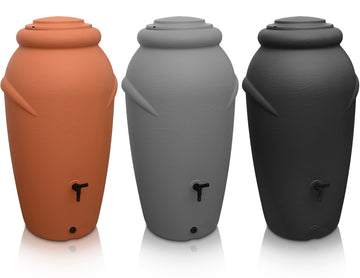
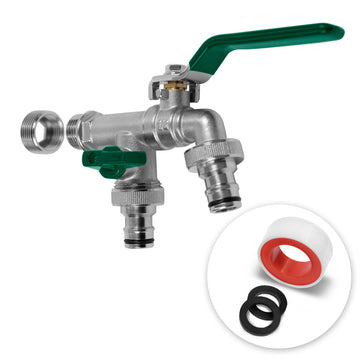
![Drei hohe YourCasa Regentonne 240 Liter [Wellen-Design] - Frostsicher & UV-beständige Gartentöpfe in den Farben Schwarz, Grau und Terrakotta, jeweils mit Drainagesystem für nachhaltige Bewässerung.](http://yourcasa.de/cdn/shop/files/ohnelogo_b8aeecac-557e-4106-a999-e77dcd160209.jpg?v=1707130230&width=360)
